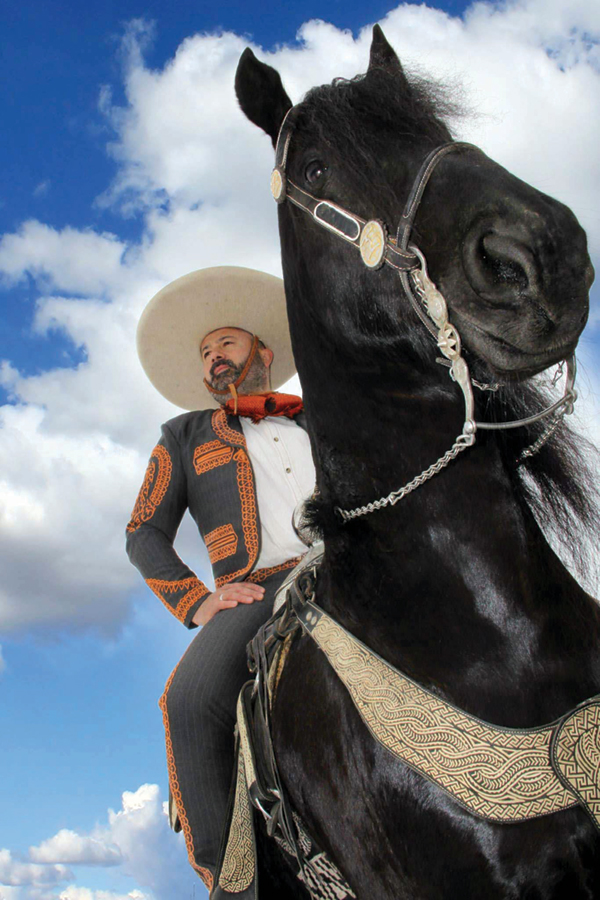[:en]
Charrería, the Mexican art that mainly consists of properly handling a horse, is without a doubt an important part of Mexicanity, becoming a major part of its culture and creating a way of life and historical heritage. As a tradition from centuries ago, it is a living symbol of Mexican nationalism as well as a national sport of a country rich in interesting costumes.
Even though nowadays charreria is considered as a sport, in many Mexican regions, it is still a way of life that lives on from generation to generation. This is why it plays an important role in the traditions of Mexico, considered by many as the most authentic and beautiful of them all.
Because of all this, it is great to see how Omaha has decided to work on activities and events that rescue, preserve and present this activity, as was the case for the Fiesta Charra at La Mesa restaurant in Bellevue, thanks to the support of the Mexican Consulate.
According to Mexican Consul Guadalupe Sánchez Salazar, this event is part of a project from Sergio Robles, a member of the Advisory Council of the Institute for Mexicans Abroad (IME) that was presented to Mexican authorities to be accepted into said institution and to promote charreria.
Since back when it was first presented in 2015, the IME authorities acknowledged the efforts of counselor Sergio Robles on the charrería project. “As well as for his professional work for the benefit of the Mexican communities in Kansas and Nebraska.”
This is why for Robles it was great to see how the first event to promote, educate and rescue charreria finally took place. Ricardo Chairez, President of the National Association of Federated Charros in Nebraska, and Antonio A. Gómez of the Siouxland Charros Unidos Association, as well as Commissioner for Dakota County, were also present.
The event took place as an interactive workshop that showcased the outfit of the charro and the escaramuza while explaining its meaning, the way to use the rope, the reining of the horses, and how to properly handle the rein according to the regulations of the Mexican Charreria Federation.
When talking about the story of charreria, Robles stated that “at some point in Mexico’s history, many of the old ranchers were displaced from the countryside, and they ended up living in big cities, where they abandoned most of the rural practices and traditions. However, nostalgia took over and motivated them to meet periodically to relive the old days. This is how the first National Charros Association came to be back in 1921. Charros groups soon flourished in Mexico, giving birth to an activity that ever since a presidential decree in 1933 is considered as Mexico’s national sport.”
There’s currently thousands of charros who practice charreria according to the rules of the Mexican Charreria Federation, which includes over 900 organizations in Mexico and the United States, in States such as California, Texas, Arizona, Nuevo Mexico, Illinois and Nebraska.
During the event, it was mentioned how charreria as a sport includes many activities or tricks, some of which are centuries old. It is an activity that in several ways unites many Mexican families who directly or indirectly participate in it.
Something that was highlighted is how for some Mexican the charro carries over his shoulders the responsibility of being the blueprint of nationalism, a symbol of the unique identity of a nation.
At the end of all activities, Consul Titular Guadalupe Sánchez presented to all charros who participated an acknowledgment of their commitment to proudly promoting the values and traditions of Mexico in foreign countries, as well as their hard work towards presenting a positive image of Mexico.
Sergio Robles had this to say: “This art as a sport has transcends time and frontiers. A charro hat identifies Mexico, and charros have proudly taught the world about their traditions in many countries in the Americas and Europe. Today we continue to fight to keep this tradition alive as a sign of the identity of Mexico and our love for our cultural roots.”
This is why the richness of the artistic-artisan heritage of charreria is so extraordinary, and why it a tradition with a history of over 400 years that has now been exalted in Omaha.[:]


